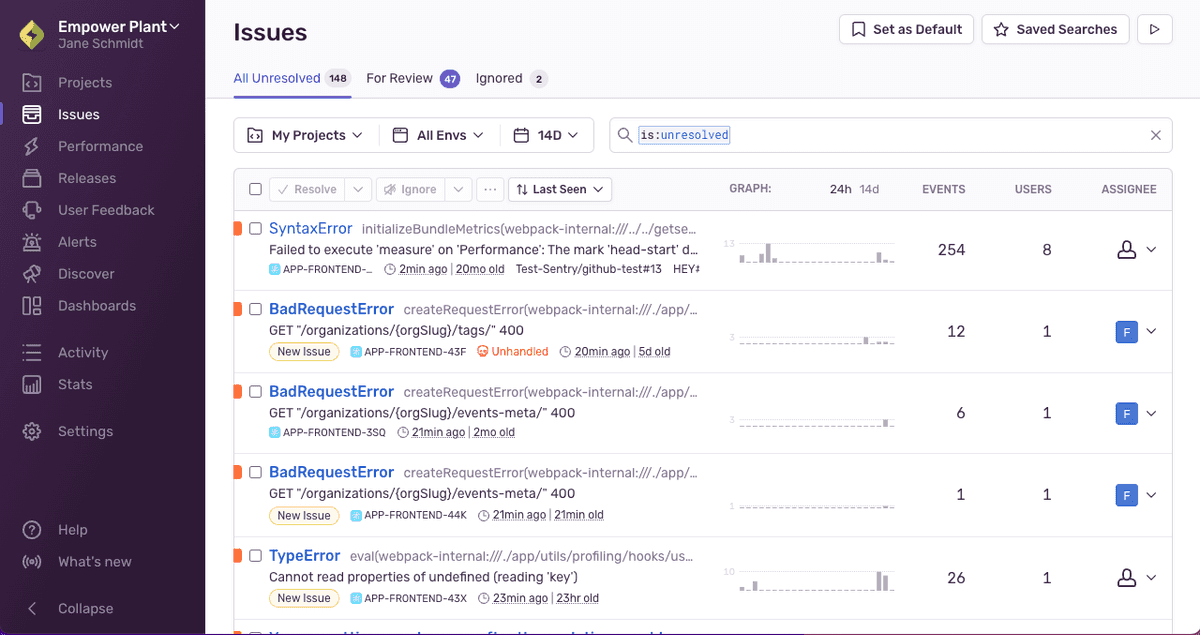Issues
The Issues page displays information about errors and performance problems in your application. This page allows you to filter by properties such as browser, device, impacted users, or whether an error is unhandled. You can then inspect issue details to better understand the problem and triage effectively.
A typical application sends a large number of events to Sentry. You can think of an issue as a single bug or problem with your app. To make them manageable, we group similar events into issues based on a
Issues and Event Quotas
Your
For each issue, the page displays:
- Issue type and description
- Associated project
- Issue timing, such as last and first time seen
For error issues, to see the stack trace of the latest event, you can hover over the issue title. You can also hover over the coloured square to the left of the issue information to see the error level (error, info, fatal, warning, debug, or sample) of the latest event:
You can save your issue queries and access them later by clicking the the "Saved Searches" button in the header. Learn more in Saved Searches. You can also add issues data to your custom dashboards, as widgets, using the dataset selector.
When you click on an issue on the main Issues page, the Issue Details page for that issue is displayed. Learn more in Issue Details.
Issue Categories
There are two categories of issues: error issues and performance issues. An error issue is a grouping of error events; a performance issue is a grouping of transactions that are performing poorly. To learn more about each issue category and what kind of information is captured in their detailed view, check out our full Error Issues and Performance Issues documentation.
Issue Triage
From the Issues page, you can begin to triage. The page is organized into tabs, each corresponding to a filtered list of issues, and these different lists help you with triaging:
- All Unresolved (
is:unresolved): All unresolved issues, including issues that need review. - For Review (
is:unresolved is:for_review): Also called Review List. Issues that need to be reviewed; for-review issues are a sub-set of all unresolved issues. - Ignored (
is:ignored): All ignored issues.
Learn more about triaging issues and their different states in Issue States and Triage.
Learn More
Our documentation is open source and available on GitHub. Your contributions are welcome, whether fixing a typo (drat!) to suggesting an update ("yeah, this would be better").
